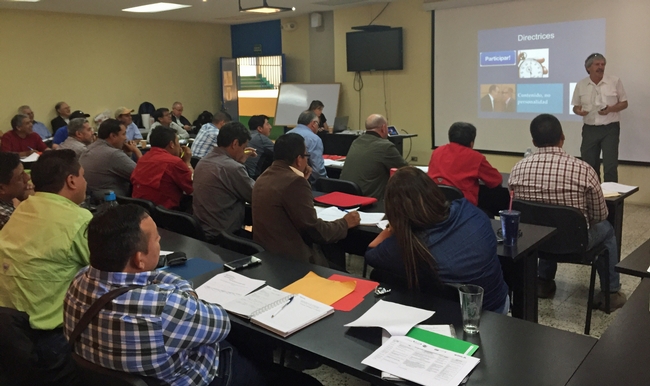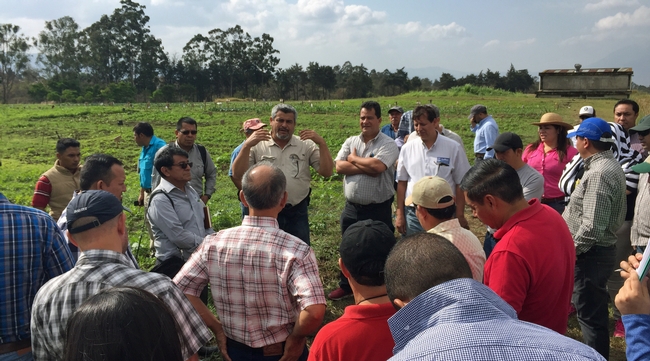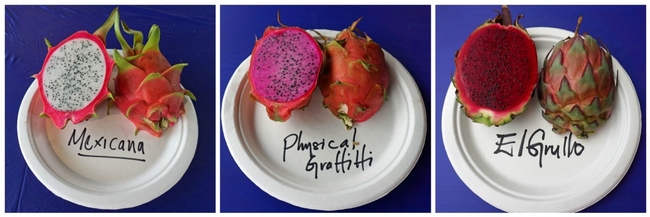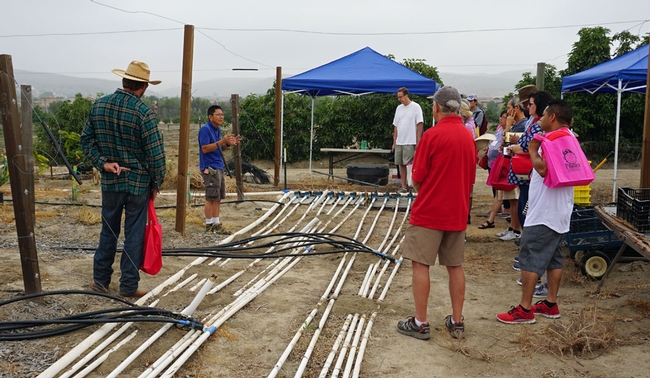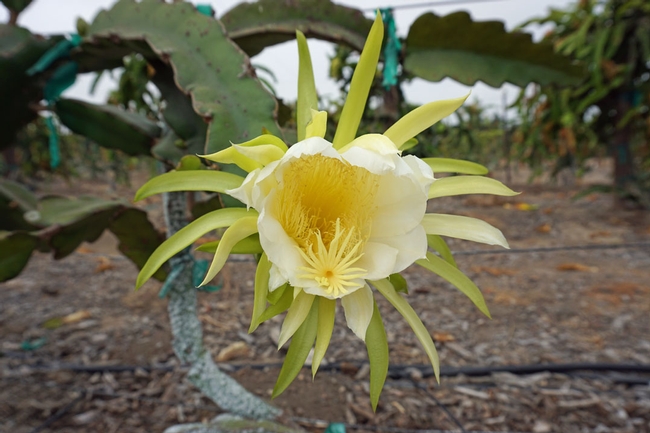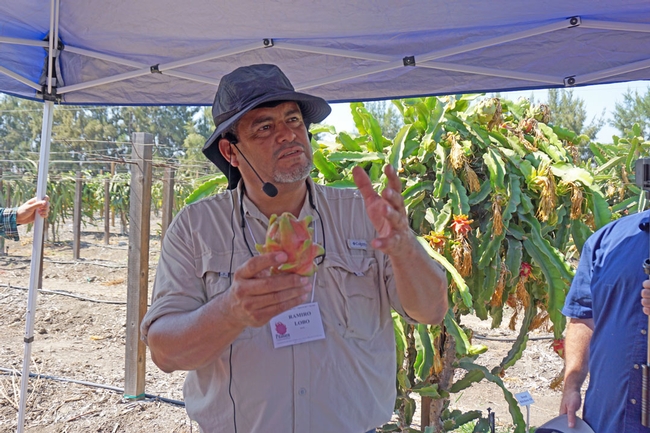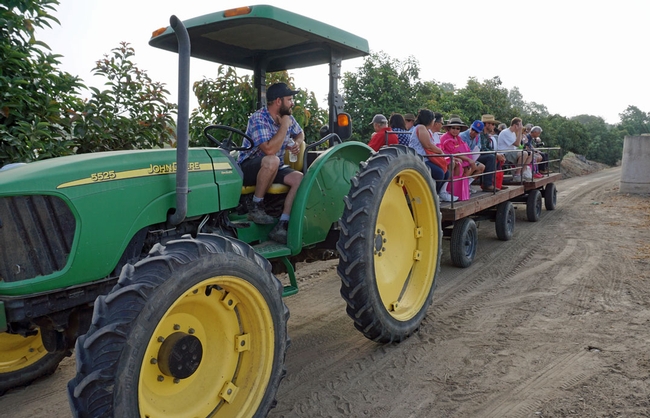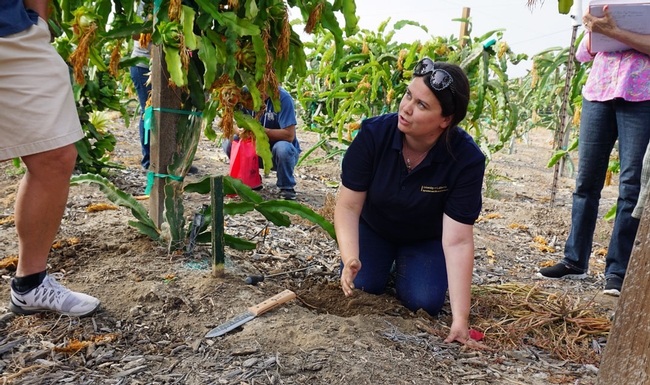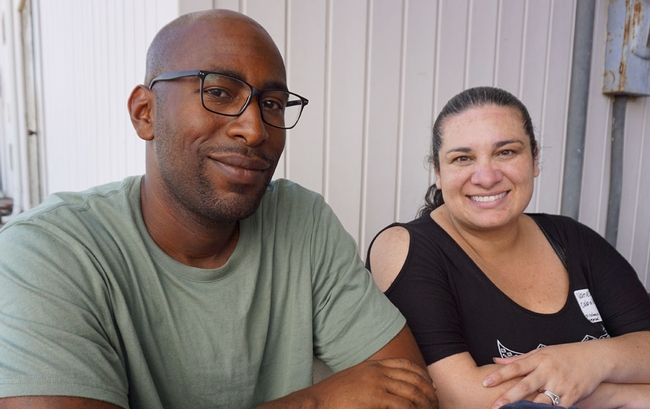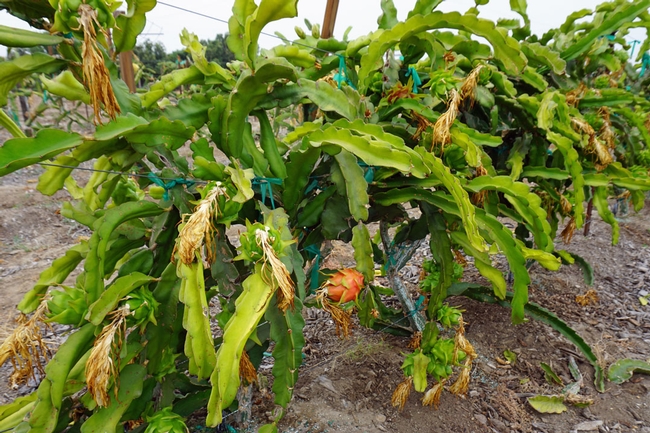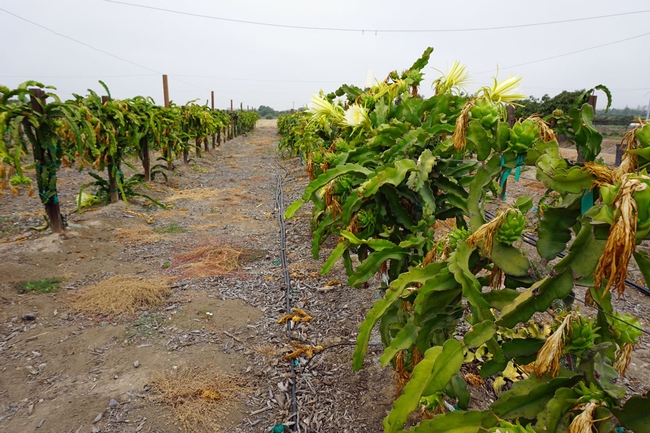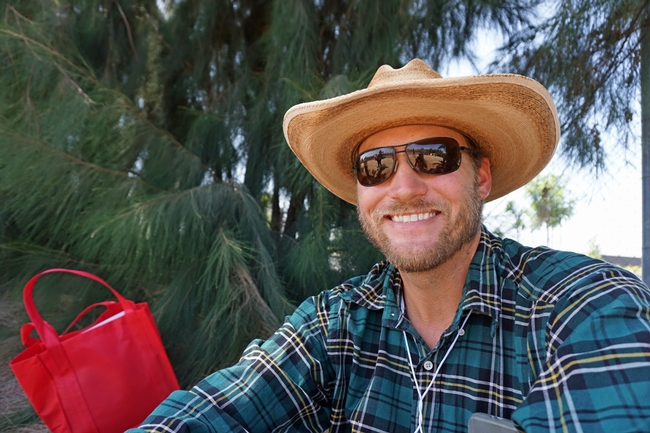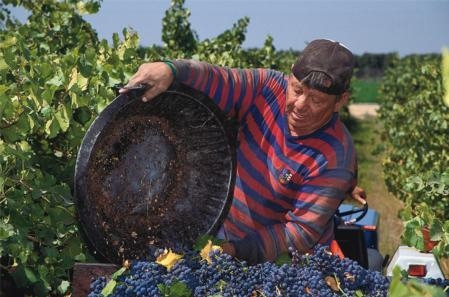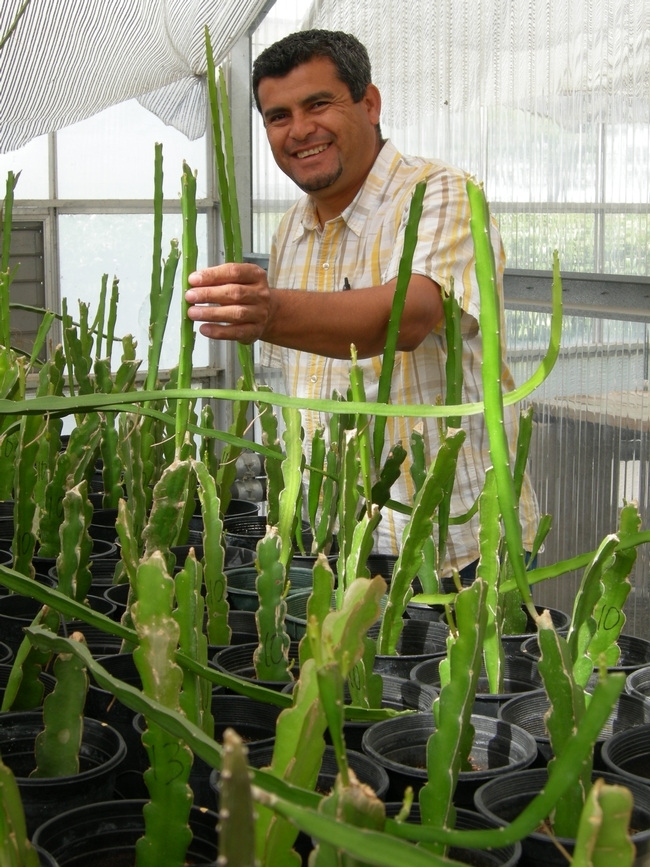Posts Tagged: Ramiro Lobo
UC ANR working with USDA to strengthen extension and farmer incomes in Guatemala
Two UC Agriculture and Natural Resources emeritus specialists, two UC ANR advisors and a UC ANR vice provost spent a week in March working in Guatemala to help implement a USDA-funded (UC Davis-managed) project that is rebuilding the extension system in Guatemala.
With a population of almost 17.5 million and a per capita income ranked 118th in the world, Guatemala is working to improve the livelihoods and incomes of it's rural population, which represents nearly half of the total population. The project is being implemented in Guatemala with the Universidad de San Carlos. Universidad de San Carlos is the biggest and oldest university in Guatemala and which - when established in 1676 - was the fourth university established in the Americas. The 150,000-student university includes a prominent and well-known agricultural school.
The UC contingent delivered modules on extension and marketing, two of five required for the participants to receive a certificate. Jim Hill, emeritus rice specialist based at UC Davis, is leading the second phase of the project.
The rest of the team for the week were Steve Temple, emeritus agronomy specialist, UC Davis; Jairo Diaz, director, UC Desert Research and Extension Center; Ramiro Lobo, advisor, UC Cooperative Extension, San Diego County; Mark Bell, vice provost, strategic initiatives and statewide programs; and Kate Lincoln, CAES Global Engagement, UC Davis. Bell led the project when he was part of the UC Davis College of Agricultural and Environmental Sciences.
The interactive week-long course worked with 31 participants, mostly from the Guatemalan Ministry of Agriculture extension offices, but also included agriculture teachers. The team shared the essential steps and associated skills required for successful extension. The course used the Spanish acronym ASISTE as a framework (previously developed by Mark Bell, Maria Paz Santibanez and Elana Peach-Fine) as an easy way to remember the key steps. ASISTE stands for audience (audience), soluciónes (solutions), información simple (simple information), transferencia (transfer), and evaluación (evaluation).
As part of the course, participants developed and delivered their own mini-workshops using local issues and context to reinforce workshop discussions. As Guatemala has a large indigenous population with more than 20 languages, one of the participants delivered his talk in Tzutuhil, the main language used for his constituents in Santiago Atitlan, Sonora department.
The beautiful and healthful pitahaya thrives in Southern California
Farmer Arian Williams is successfully tending 16 acres of avocados in the De Luz area of Temecula, but he and his wife came to the 10th annual UC Pitahaya Festival in August to see whether there is commercial potential in producing pitahaya.
"We're taking cuttings, and trying it now," Williams said.
Vanessa Caballero, Williams wife, was enthusiastic about the prospect. "I love the way pitahayas look, and there are not too many grown commercially now," she said.
The field day at the UC South Coast Research and Extension Center in Irvine included research-based presentations on irrigation strategies, gopher control, integrated pest management, and the impact of root knot nematode on the vining, climbing pitahaya cacti. Native to Central America, the crop has become popular in Asia and the Middle East. Most of the fruit sold in the U.S. is imported.
UC Cooperative Extension advisor Ramiro Lobo has found that the unusually beautiful fruiting cactus thrives in Southern California's mild climate. Pitahaya do well in regions where avocados are produced, but use much less water. They can also make excellent landscape plants, adding interest to the garden while producing healthful fruit.
Pitahaya fruit begin as large, showy, nighttime-blooming flowers, each of which contain male and female parts. In many of the most-desirable varieties, the anthers (the male part with pollen) and the stigma (the female part that needs to be pollinated) are separated by a distance that prevents night-flying pollinators, such as moths, from consistently making the connection.
For a uniform and bountiful crop, Lobo suggests hand pollination. Pollen can be collected by shaking a bloom over a bowl or trimming the anthers into a cup with a pair of scissors. He stores pollen in the freezer until the night or early morning hours when cacti bloom. He dabs up pollen with an inexpensive makeup brush and lightly swishes it onto the flowers' stigma.
“It's easy and takes just a few seconds per flower," Lobo said. "If you don't hand pollinate, you end up with fruits that are very small. And uniformity isn't there."
Hand pollination also allows farmers to accurately project their pitahaya harvest and work in advance with fruit marketing companies to sell the crop. Lobo said he carries a mechanical counter to click as he pollinates flowers. Forty days later, that precise number of fruit will be ready for harvest.
Effective farm labor management is a key to success in times of labor uncertainty
UC Cooperative Extension will hold workshops in Temecula Feb. 1 and 2 to help California farmers facing agriculture labor challenges stemming from wage and hour laws, joint liability, worker protection, workers' compensation, insurance and immigration issues and policies.
“Farmers are better prepared to face uncertainty in labor markets with up-to-date information and strategies for dealing with people management, and legal and regulatory issues,” said Ramiro Lobo, UC Cooperative Extension farm advisor in San Diego County and workshop organizer. Additional program partners are the California Farm Labor Contractor Association, Zenith Insurance Company and Wilson Creek Winery and Vineyards.
The workshops will be at Wilson Creek Winery and Vineyards, 35960 Rancho California Rd., in Temucula. “Challenges and Strategies in Agricultural Labor Management” runs from 7 a.m. to 5 p.m. Feb. 1. The program includes a review of labor management issues in Southern California, an update on labor laws, basic strategies for legal and effective hiring and orientation, and effective management of worker injuries. The event ends with wine tasting hosted by Wilson Creek.
“Management and Supervision of Personnel for Agricultural Operations,” will be offered in Spanish on Feb. 2. The program, intended for farm owner/managers and first-line supervisors, provides information on effective supervision and management in times of labor shortage, positive and clear communications, and preventing sexual harassment and bullying. Networking and wine tasting, hosted by Wilson Creek, conclude the program.
“Properly managing personnel is critical because of the scarcity of labor,” Lobo said. “We will provide strategies to retain employees by making the workplace more attractive.”
Advance registration is available with a credit card online. Registration for the Feb. 1 workshop is $80 per person before Jan. 20, and $100 after or at the door, if space allows. Registration for the Feb. 2 workshop is $60 per person before Jan. 20, and $80 after or at the door, if space allows. A registration discount is available for participants to attend both events. For both events, registration is $120 before Jan. 20, and $140 after or at the door, if space allows.
For more information see the San Diego County Small Farm website.
San Diego is a hub for small farms
With 5,700 small-scale farms, San Diego County bills itself as having the state's largest concentration of small farms, reported Tatiana Sanchez in the San Diego Union-Tribune. About 4,000 of the farms are from 1 to 9 acres in size.
"We have 3 million consumers in San Diego County and maybe 17 to 18 million consumers in Southern California. It makes an opportunity for someone to find a niche and find a place to succeed in this world and sell their product," said Eric Larson, executive director of the San Diego County Farm Bureau.
UC Agriculture and Natural Resources has an advisor dedicated to agricultural economics and small-scale farm production in San Diego County. Ramiro Lobo, who is based in the UC Cooperative Extension office in San Diego, said new and veteran small farmers face tough odds.
"Most of the land that is available in San Diego County is already being farmed. People are paying (standard) real estate prices for agricultural land," he said.
For existing farmers, the challenge is simply to stay afloat financially, Lobo said.
Decades ago, most small farms grew avocados and citrus, the article said. Because of water challenges, today's small-scale farmers typically grow high-value crops like cut flowers and other nursery items. Another crop that is growing is popularity is pitahaya, or dragon fruit. Lobo is testing pitahaya varieties at the UC South Coast Research and Extension Center in Irvine. Each summer he invites farmers and the public to the center to sample the fruit and learn about pitahaya production.
Exotic pitahaya possible desert cash crop
A native of Mexico and South American, the beautiful tropical fruit pitahaya - also known as dragon fruit - could be a viable crop for Southern California desert, said an article in the Desert Sun.
Ramiro Lobo, UC Cooperative Extension advisor in San Diego County, shared the results of pitahaya studies conducted in San Diego and Irvine with a group of inland desert farmers recently.
“The fruit size and quality is good ... we’re getting great marketable yields,” Lobo said.
In March, five varieties of the fruit were test-planted at UC Riverside's Coachella Valley Agricultural Research Station in Oasis.
“We’re selecting varieties that can tolerate the heat,” said José Luis Aguiar, UCCE advisor in Riverside County. “They’re doing well in San Diego County and Irvine and we’re trying to extend the range.”
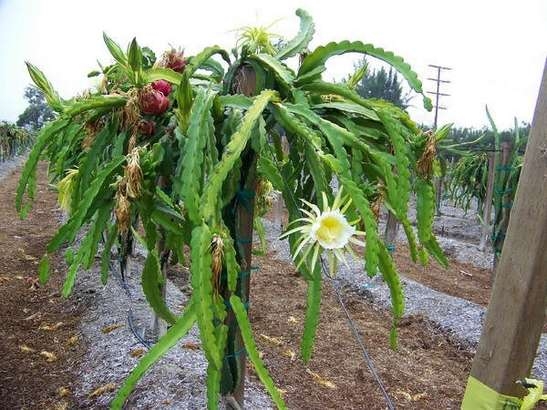
Dragon fruit grows on a cactus plant. (Photo: Jose Luis Aguiar)

